- NEW DVD Series – Stone Setting with Bezels
- Tube Set Charm by Kim St. Jean
- Prong Basket Pendant by Kim St. Jean
- NEW DVD Series – Stone Setting with Cold Connections
- New DVD Series – Stone Setting with Wire
- NEW DVD Series: Introduction to Stone Setting by Kim St. Jean
- Featured Tool: Bracelet Bending Plier
- NEW Dvd by Eva Sherman
- Fun, Fast Fold Forming DVD Series
- Double Band Ear Cuff from Alex Simkin
The Ring Clamp
by Judy Ellis, Wirejewelry.com
Wire Jewelry Tool Tip for January 11th 2017
Get to know your hand tools – Tool Tip three
The Ring Clamp
Today, we continue with our 12 part tool tip series by Helen Driggs. In today’s tip Helen gives us some good advice on using the ring clamp,.
A little about Helen:
HELEN I. DRIGGS is an experienced metalsmith, lapidary and studio jewelry instructor and has appeared in 6 instructional jewelry technique videos. Her book, The Jewelry Maker’s Field Guide was published in 2013.
Follow her blog: materialsmithing.wordpress.com, Instagram: hdriggs_fabricationista and Twitter feed @fabricationista for news, her teaching schedule and for other jewelry-related information.
Helen Says:
I have always believed that the ring clamp is one of the most useful yet least used tools. This simple and typically inexpensive tool is a powerhouse for working smart. Once you learn to use it, you’ll see that the ring clamp will help you hold tiny things during filing, sanding, forming or polishing and will save your hands and your metal, not to mention hours of wasted time crawling around on the floor looking for dropped objects.
How it works:
You’ll notice the ring clamp has a round jaw – for rings and curved shapes – and a straight jaw – for straight-sided shapes. Most models feature leather pads inside the jaws, and a separate wedge that can be inserted into either jaw and secured with a few taps on the bench top. Simply insert the jewelry object or part into the desired jaw, insert the wedge on the other end, and tap it on the tabletop. Once secured, you can brace the ring clamp against or in the V-slot of the bench pin to support your work as you file, sand, drill, set or polish.
Some specialty bench pins even feature a hemispherical opening specifically designed for the ring clamp to rest in. Another plus: any wood ring clamp can be modified to a specific task by sawing it or changing the jaw shape as needed. You can create several modified clamps to assist you with repetitive tasks or production work.
Choosing a ring clamp:
The basic design of a ring clamp hasn’t changed for decades. Look for a wood one with a secure hinge. Check that the metal band holding the clamp together is tight, even and securely riveted. Make sure the wood has a smooth surface and that the wedge is easy to insert and lock into position without slipping. Check the thickness of the leather pads, and ensure they are evenly thick and securely glued into position.
I prefer a light color clamp because I work in base metals but also have a darker mahogany color version for silver or nickel. Plan to spend less than $10.00 for a basic model, more for fancier versions or models made from exotic wood.
My 5 favorite uses for the ring clamp
• Holding metal parts securely during drilling.
• Filing and sanding ring shanks and bands
• Filing tubing edges flat for tube settings
• Holding warp wires parallel for wire weaving
• Holding multiple sections of square stock for even sawing and drilling
Classes with Helen:
If you’d like to spend some one-on-one time with Helen and learn more about metalsmithing – you still have time to register to join her at JOGS in Tucson. Her classes will be offered January 30th and 31st. Click below to see what she will be teaching for our sister company JewelryTools.com.
Multi-Metal Cold Connected Bracelet
This is the bracelet that started a cold-connection renaissance, and you can learn to make it directly from the artist who created it! You will learn to texture metal, use a disc cutter, drill and punch holes with precision, and connect mixed metal circles with rubber O-Rings and micro hardware to create an unusual, adaptable bracelet or necklace.
Metal formed Botanical Pendant
Saw thin gauge metal and form it on a synclastic stake to quickly create these pretty botanical forms. You’ll be amazed at how fast these can be made and finished and you’ll have the option of forming a pendant or earrings with the option of creating several flower species. The ability to saw well will help you succeed.
Color on Metal
Learn how to add a splash of vibrant color to your jewelry metal! We’ll use colored pencils and pastels to create rich layered color on copper or brass. We will create an easy pair of earrings in class – or students have the option to create a simple riveted pendant if they are experienced at fabrication techniques like sawing and riveting. In addition to the coloring technique, instructor will demo Riveting, Sawing and delve into Color Use and Design. Don’t worry if you can’t draw – we have pre-made patterns to color, too!
I hope you’ve enjoyed and learned a little bit more about hand tools. Look for more great tips from Helen in the future.
Happy Wrapping!
![]()
Click to Receive Daily Tips by Email






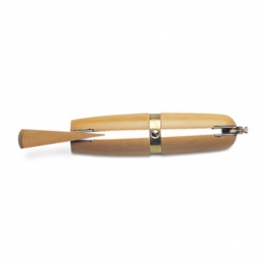
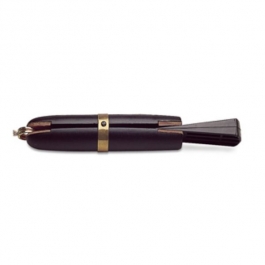
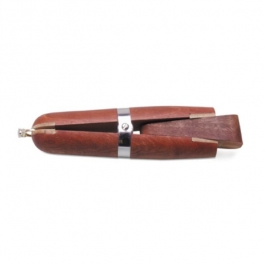
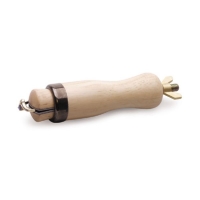
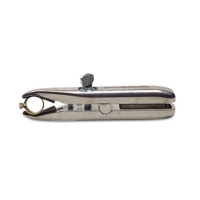

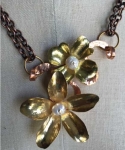
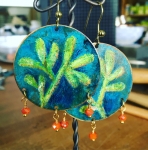
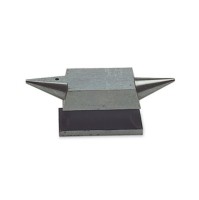
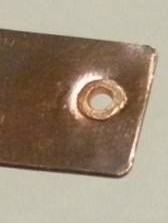
















0 comments